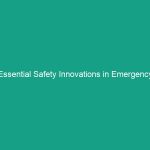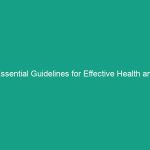Introduction
Good morning team! Today, we’re diving into a crucial topic that affects all of us: Essential Building Evacuation Plans: Procedures for Unique Layouts. Understanding how to effectively evacuate a building, especially one with a unique layout, is vital for our Safety. In the event of an emergency, every second counts, and having a clear evacuation plan can make all the difference.
Evacuation plans are not just pieces of paper; they are life-saving strategies designed to guide us through emergencies. So, let’s explore why these plans are essential and how each of us plays a role in ensuring Workplace Safety.
Understanding Essential Building Evacuation Plans
Essential building evacuation plans are structured Procedures that outline how to safely exit a building during emergencies, such as Fires, earthquakes, or other hazardous situations. These plans are especially critical in buildings with unique layouts, where conventional exit routes may not be applicable or safe.
Implementing effective evacuation plans is crucial for several reasons:
- They provide clear guidance during emergencies.
- They help identify primary and secondary exit routes.
- They ensure that everyone understands their roles during an evacuation.
One common misconception is that evacuation plans are only necessary for large buildings. However, every workplace, regardless of size or layout, must have a tailored evacuation strategy to ensure the Safety of all employees.
Key Hazards, Risks, and Safety Considerations
When discussing evacuation plans, it’s essential to understand the specific Hazards and risks associated with unique building layouts. Some key considerations include:
- Obstructed pathways: Unique layouts may have unexpected barriers, making certain exit routes impassable.
- Limited visibility: Poor lighting or complex designs can confuse employees during an evacuation.
- High occupancy areas: Areas with more people can lead to congestion and panic, slowing down the evacuation process.
Ignoring proper safety protocols can have serious consequences. For instance, a poorly executed evacuation can lead to injuries or even fatalities. Therefore, it is crucial to recognize these risks and prepare accordingly.
Best Practices, Procedures, & Actionable Advice
To ensure a safe evacuation, follow these essential procedures:
1. Familiarize Yourself with the Evacuation Plan
Every employee should know the building’s evacuation routes and emergency exits. Take time to review the evacuation map posted in common areas and ensure you understand the layout, including:
- Primary exit routes
- Secondary exits
- Safe assembly points outside the building
2. Participate in Drills
Regular evacuation drills are crucial for ensuring everyone knows what to do in an emergency. Participate actively and treat these drills as real situations. This practice helps identify any potential issues in the evacuation plan.
3. Communicate Effectively
During an emergency, clear communication is vital. Know how to alert your coworkers about an evacuation and ensure everyone understands the plan. Use direct and calm language to avoid confusion.
4. Assist Others
During an evacuation, look out for those who may need extra help, including visitors or coworkers with disabilities. Make sure that everyone can safely exit the building.
5. Know Your Environment
Be aware of your surroundings. Understand any unique features of your workspace, like stairwells that lead to outside exits, and ensure they are clear of obstacles. This knowledge can save precious time during an evacuation.
6. Stay Calm
In an emergency, panic can lead to chaos. It’s crucial to remain calm and encourage others to do the same. A composed response can facilitate a smoother evacuation.
Regulations, Standards, and Compliance
Understanding the legal framework surrounding evacuation plans is essential. Organizations must comply with OSHA (Occupational Safety and Health Administration) standards, which mandate that employers provide a safe workplace, including proper evacuation plans.
Failure to comply with these Regulations can result in penalties and fines, but more importantly, it can jeopardize employee safety. It’s our responsibility to ensure that we adhere to these Standards to protect ourselves and our coworkers.
Employee Engagement & Discussion
Let’s take a moment to think about our experiences. Have any of you faced challenges during previous evacuations? What improvements do you think we could make to our current plan? Your feedback is invaluable in creating a safer workplace.
Conclusion & Key Takeaways
To wrap up, essential building evacuation plans tailored for unique layouts are critical for our safety. Remember the key points:
- Familiarize yourself with the evacuation routes and procedures.
- Participate in drills and provide feedback on the evacuation plan.
- Communicate clearly and assist others during an evacuation.
- Stay calm to help facilitate a smooth evacuation process.
Thank you for your attention and commitment to safety. Together, we can create a safer workplace for everyone! Let’s prioritize safety and ensure that we’re prepared for any emergency.


